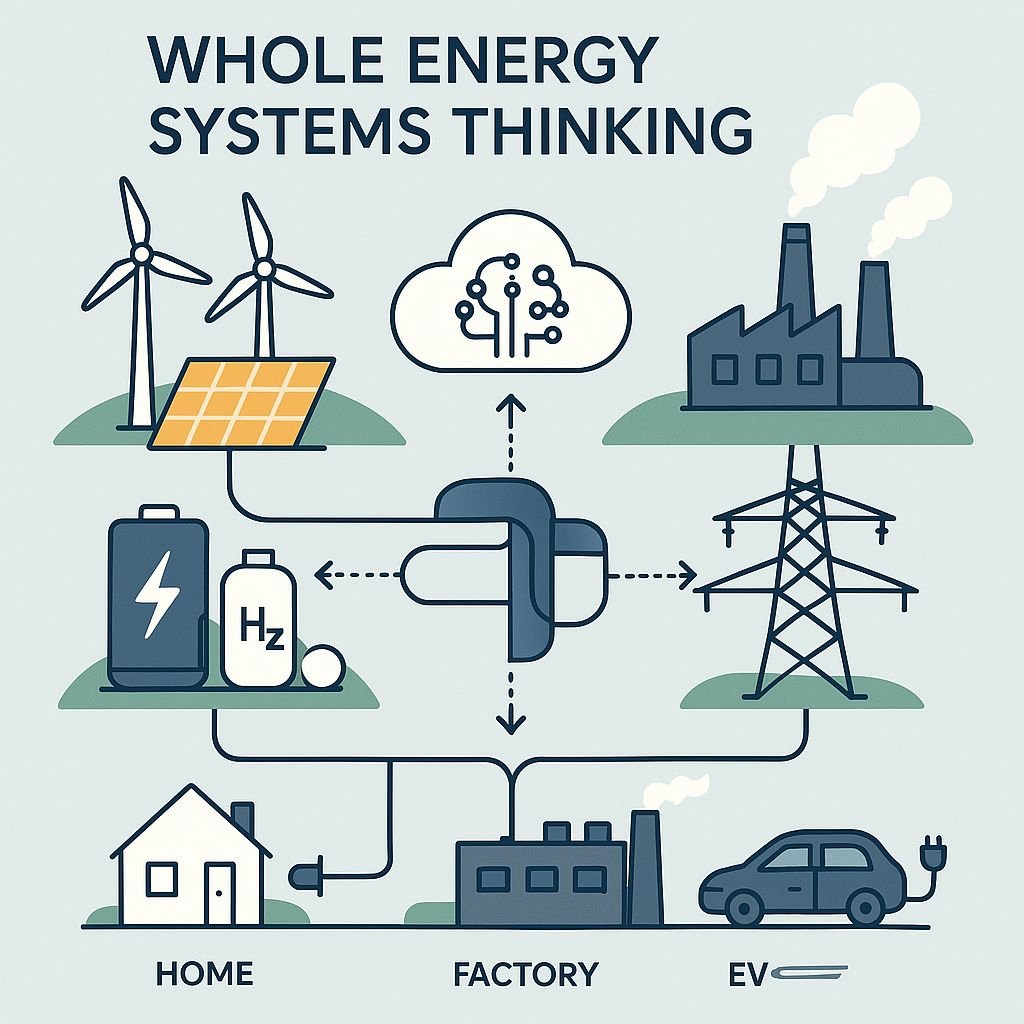From Silos to Systems: How Civil Renewables Embodies the Future of Energy Design
The 2025 DNV report, 'From Silos to Systems', presents a compelling vision for the future of energy: one that demands a shift from fragmented, siloed operations to integrated, whole energy systems. This transformation is not just about technology—it’s about rethinking how we design, regulate, and operate the infrastructure that powers our world. At Civil Renewables, this philosophy is already embedded in our DNA.
Whole Energy Systems Thinking — interconnected energy sources (wind, solar, fossil fuels), infrastructure (grids, pipelines), storage (batteries, hydrogen tanks), and end users (homes, commercial, factories, data centers, EVs, etc.), all coordinated by digital systems and AI.
Whole Systems Thinking: A Blueprint for Resilience
DNV’s report emphasizes that energy systems must evolve to become more electrified, distributed, and dynamic. This requires a holistic approach that integrates generation, distribution, storage, and consumption across all energy carriers. Civil Renewables has long championed this perspective through our commitment to reliability-based design. By anticipating interdependencies and stress points across systems, we ensure that infrastructure solutions are not only efficient but resilient under real-world conditions.
Standards as the Backbone of Integration
One of the report’s central messages is the need for standardization and interoperability—especially as digitalization and AI become central to energy system management. Civil Renewables leads in this space by developing and applying rigorous engineering standards that enable seamless integration across technologies and sectors. Whether we’re designing hybrid systems that combine renewables with storage or advising on grid modernization, our standards-based approach ensures compatibility, safety, and long-term performance.
Regulatory Reform and Strategic Planning
The DNV report highlights the urgent need for regulatory reform and smarter permitting processes. Civil Renewables actively supports these efforts by working with policymakers and stakeholders to streamline project development. Our reliability-based frameworks help prioritize shovel-ready, system-critical projects—ensuring that infrastructure investments are timely, impactful, and aligned with national decarbonization and energy dominance goals.
Empowering Consumers and Communities
As energy consumers become producers—through rooftop solar, electric vehicles, and behind-the-meter storage—the grid must adapt. Civil Renewables is at the forefront of designing systems that accommodate this shift. We advocate for and implement solutions that empower communities, reduce grid congestion, and enhance local resilience. Our work reflects the report’s call for early, inclusive engagement with stakeholders to ensure that infrastructure development is both equitable and effective.
Digital Foundations for a Smarter Grid
DNV’s vision of interconnected digital twins and AI-driven grid management is already taking shape in our projects. As digital tools become central to energy system management, our standards-based approach can help ensure that these technologies are deployed safely, effectively, and in ways that enhance system reliability. Furthermore, project developers, owners and operators are increasingly integrating advanced modeling, real-time monitoring, and predictive analytics into design processes. This not only improves operational efficiency but also supports proactive maintenance and rapid response—key elements of a reliable energy system.
The Bottom Line
In essence, Civil Renewables is not just aligned with the DNV report’s recommendations—we are living them. Our commitment to standards, systems thinking, and reliability-based design positions us as a thought leader in the energy transition. As the industry moves from silos to systems, we’re proud to be building the bridges that make that future possible.

